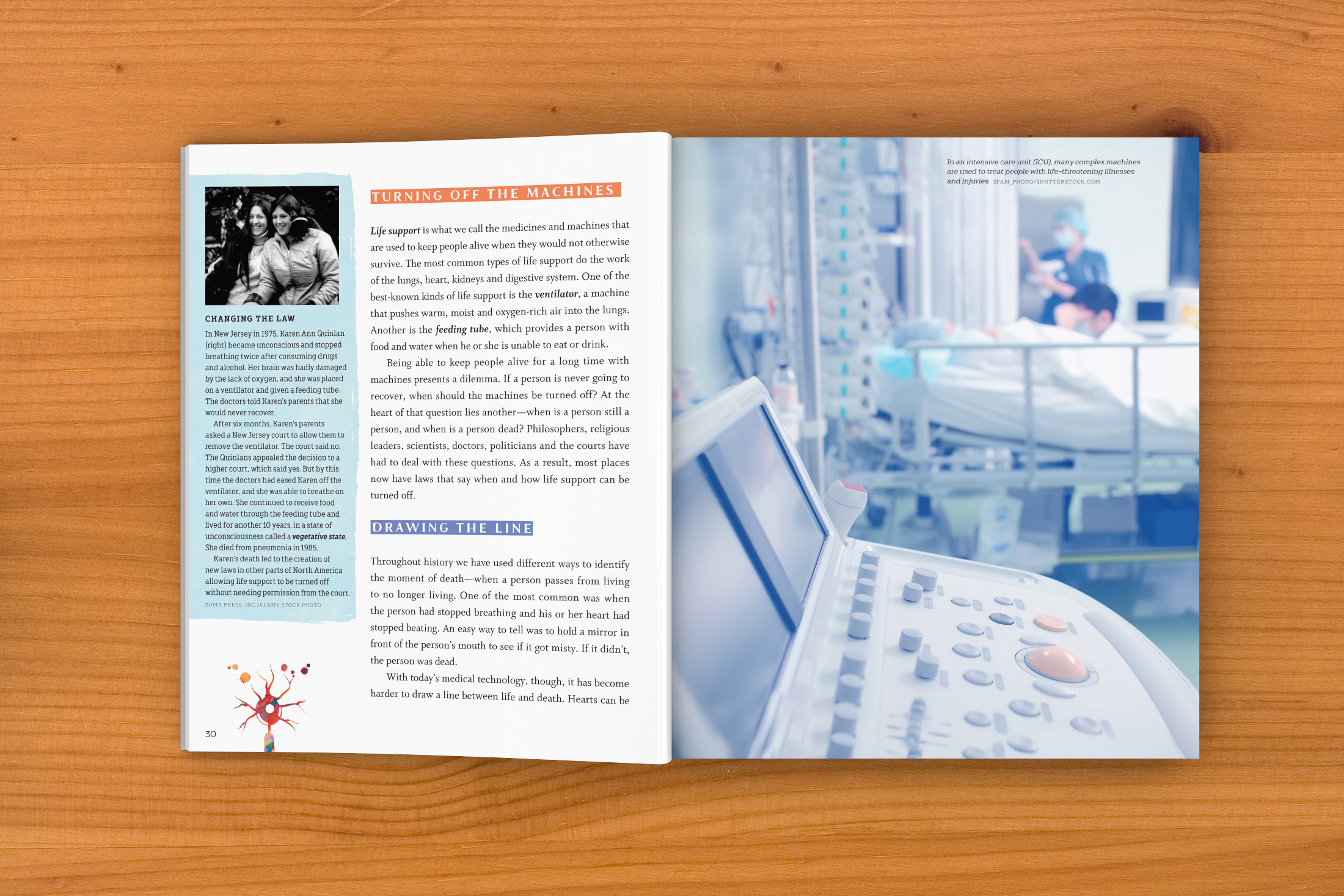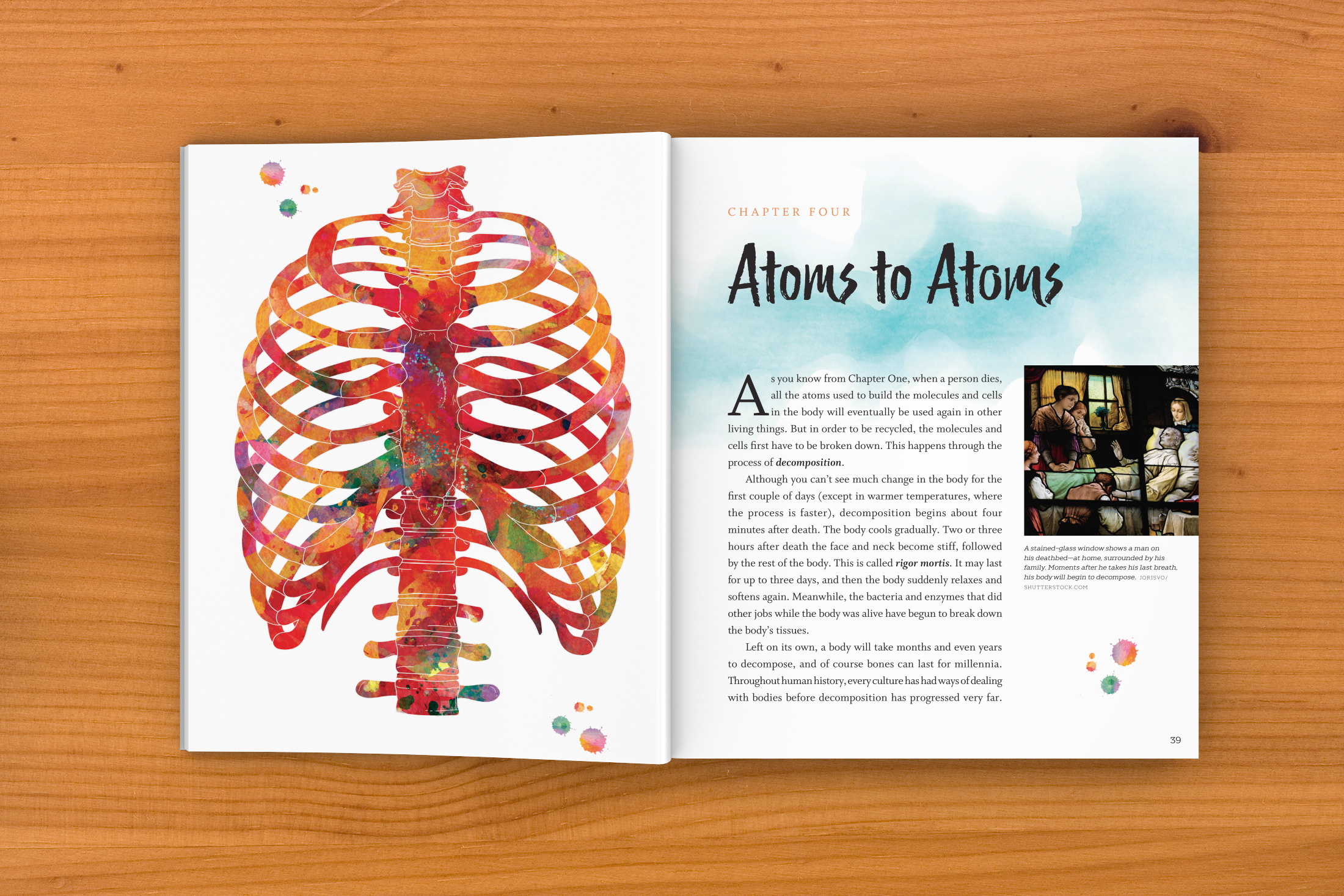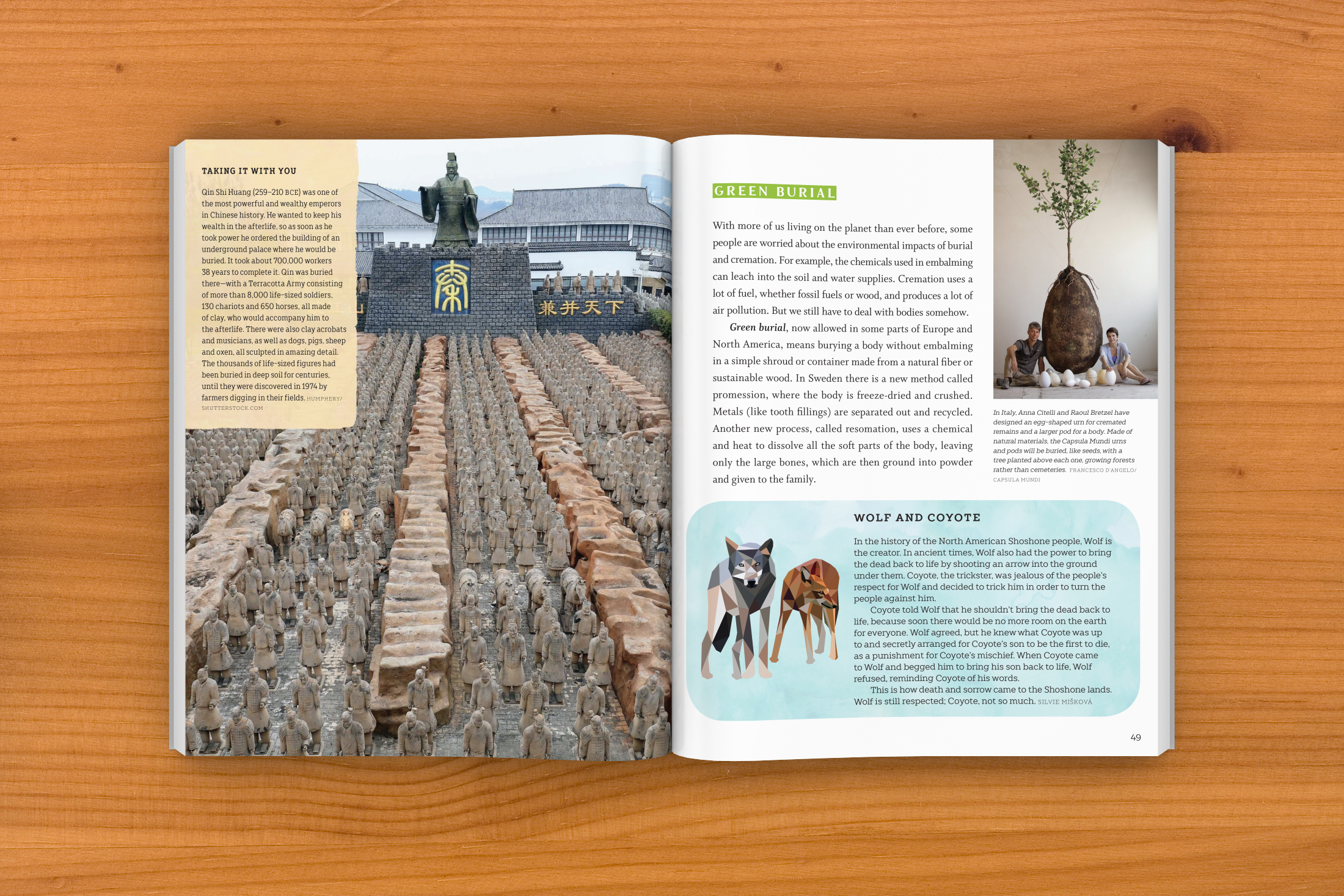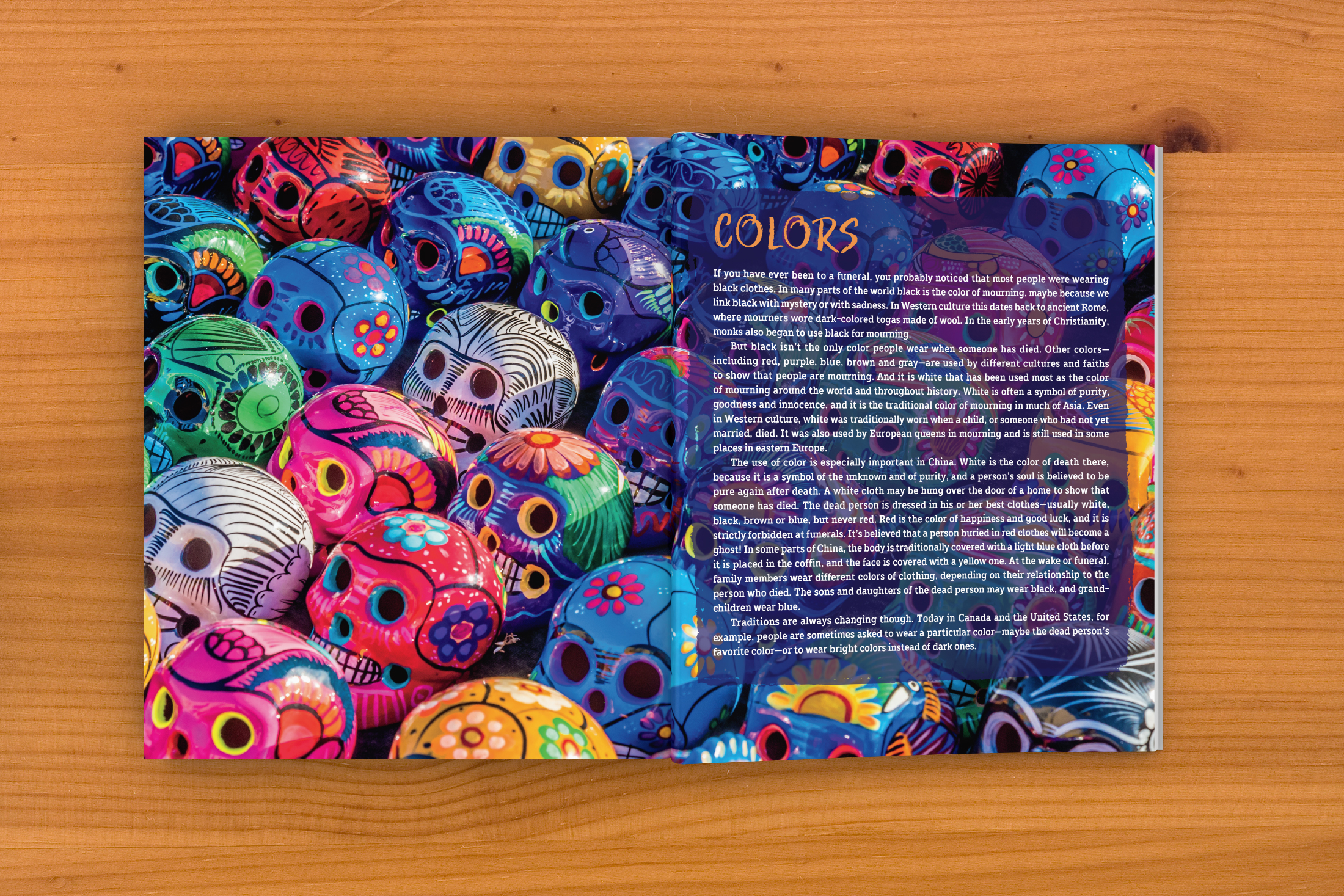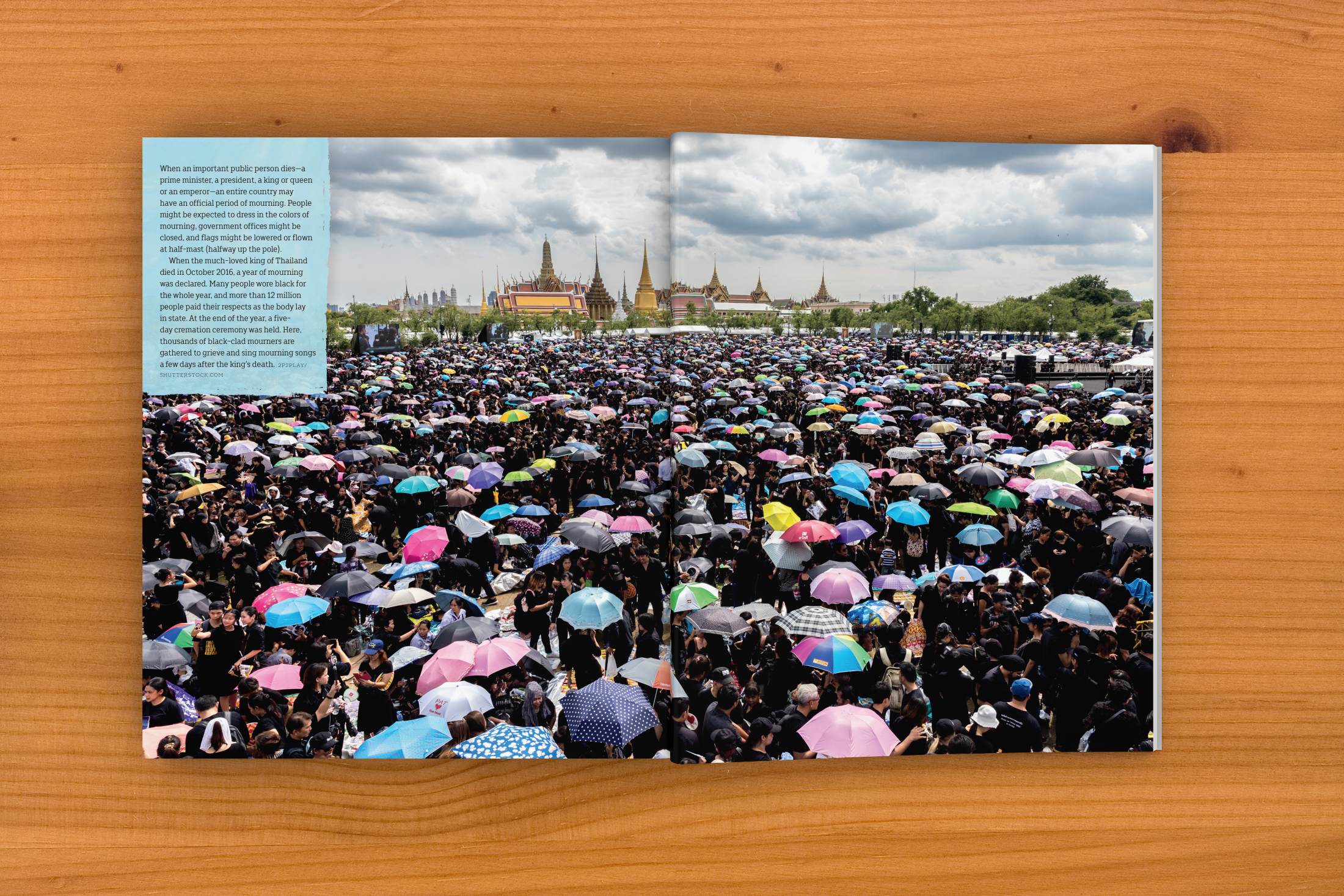After Life: Ways We Think About Death
ISBN: 9781459813885
Publisher: Orca Book Publishers
Fall 2018
Everybody does it, but no one wants to talk about it.
Why do we die? Why can’t we live forever? What happens to us after death? Moving between science and culture, After Life: Ways We Think About Death takes a straightforward look at these and other questions that have long been taboo in our society. Showing the fascinating, diverse ways in which we think about death, both today and throughout our history, the book also shines a light on what it is to be human.
Each chapter includes a brief telling of a death legend, myth or history from a different culture or tradition, from Adam and Eve to Wolf and Coyote, and ends with a section on a common theme in our thinking about death, such as rivers and birds in the afterlife, the colours uses to symbolize death, and, of course, ghosts. The last chapter is about grief, a universal human response to loss that each of us experiences differently.
Buy the book
Please support your local independent bookstore; if they don’t have After Life: Ways We Think About Death, they can order a copy for you. You can also order print and ebooks directly from Orca Book Publishers or from Indigo or Amazon.
Awards
2019 TD Canadian Children’s Literature Award (shortlisted)
2019 Norma Fleck Award for Canadian Children’s Non-Fiction (shortlisted)
Canadian Children’s Book Centre’s Best Books for Kids and Teens 2019 (starred selection)
Children’s Book Council 2019 Notable Social Studies Trade Books for Young People
Ontario Library Association Best Bets 2018
Reviews
In After Life: Ways We Think About Death, author Merrie-Ellen Wilcox demystifies many of the things our culture has thrown mystery over with a very lucid, hard and fast look at pretty much everything to do with death and dying. Why do we die? What happens after death? What are some of the customs and thoughts around this inevitable part of life? As Wilcox says in her introduction “… these days we don’t talk much about death, especially around kids. Why is that? All human beings die, after all — and with almost eight billion of us on the planet, there’s a lot of dying going on.”
This fresh, friendly and matter-of-fact tone is what makes After Life really work. This is a useful and interesting book intended to help nine to 12-year-olds deal with all of the thoughts and issues around this sometimes shunned topic. (January Magazine)
Author and hospice volunteer Wilcox (What's the Buzz? Keeping Bees in Flight) skillfully tackles the subject of death and dying in this nonfiction book for middle grade readers. Six short chapters ("We Are Stardust" and "Healing After Loss" among them) discuss the physiology of death—one page details what happens to the body minutes, hours, months, and years after the event—as well as the beliefs and rituals surrounding life's end over the millennia and across the globe. Full-color photographs and artwork, as well as definitions and sidebars, will pull curious readers into the factual pages, which cover everything from green burials and grief stages to physician-assisted death, cryonic suspension, and bioethics. Thorough and well organized, this book honors its intended audience's ability to handle the subject matter, offering detailed scientific, mythological, historical, cultural, and religious takes on how people handle death ("During the Middle Ages, parents in Europe dressed their young children like adults to trick death into looking elsewhere for its prey"). Print and online resource lists, and extensive glossary, and an index conclude this meaningful, straightforward look at an often taboo topic. Ages 9–12. (Publishers Weekly)
Wilcox takes a matter-of-fact tone with the very intense topic of death. She breaks it down to scientific facts of life and death, bringing in various beliefs from different cultures and religions on what happens next. The last part discusses grief and how to deal with grieving. While students might not gravitate to this title on their own, readers curious or needing solace after a personal tragedy will find this insightful book very helpful, especially the last portion, which breaks down the grieving process and its importance to mental health. The book could also serve as a conversation starter... Verdict: A welcome selection for most collections, especially those in need of bibliotherapy titles for middle schoolers. (School Library Journal)
Young people need death education! After Life: Ways We Think About Death opens the door and welcomes them to learn about this important life event. Merrie-Ellen Wilcox successfully marries culture and the natural world in an attractive and engaging format for readers. This book will be an excellent resource for teachers, parents, libraries and hospices wanting to support young people to learn about dying and death. (Dr. Kathy Kortes-Miller, author of Talking About Death Won’t Kill You)
An unashamedly honest, visually compelling guide to death and dying for young readers. Just as essential as Sex Ed! (Jessica Zitter, MD, author of Extreme Measures: Finding a Better Path to the End of Life)
In the age of social media, it is now more important than ever that we talk about death with young people. After Life explores the subject of death in a compassionate, straightforward and age-appropriate way. It is an essential resource for middle schoolers — and their educators and parents. (Dr. Jillian Roberts, child psychologist and author of the World Around Us series)
A sensitive approach to a difficult subject. (Kirkus Reviews)


